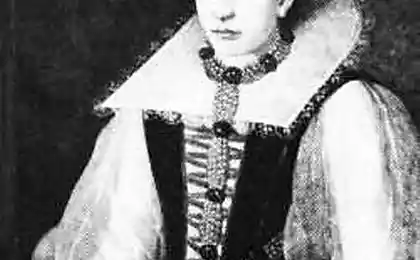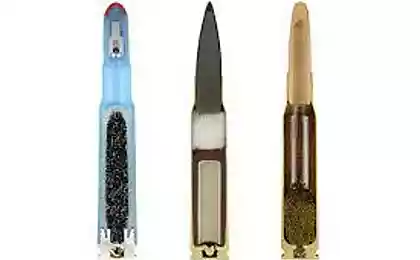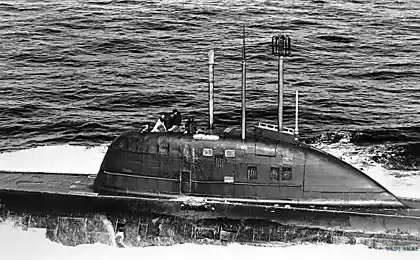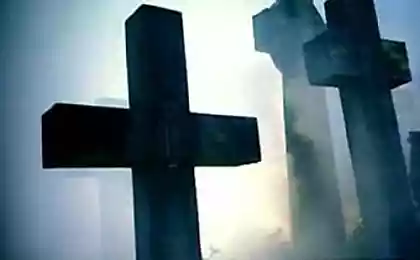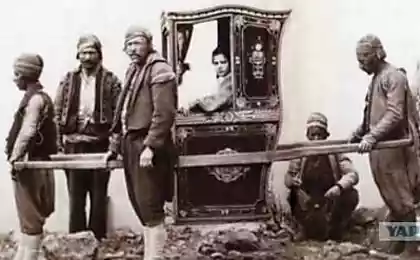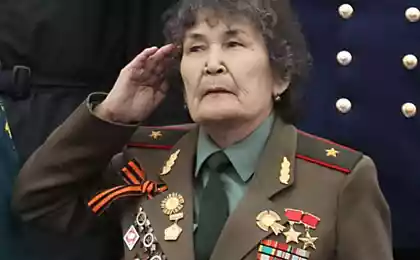2637
Bacchanalia calibers
Caliber - is the diameter of the bore of artillery, as well as pistol, rifle and shotgun. Every person who, in one way or another connected with military affairs, familiar with the term, knows what it is, and knows, of course, that the aircraft cannons and machine guns alone, and other marine applications. Well, what gauges exist in the military in general, and how many of them all? The answer to this question is not as simple as it seems, especially because a lot of calibers. Well, just a lot, and not always they were due to some special considerations - that's how! And as all this "riot caliber" is directly linked to the development of military equipment, we decided to tell you about it. At that start with guns, because this caliber firearms own separate topic.
Will 11 photos and text via
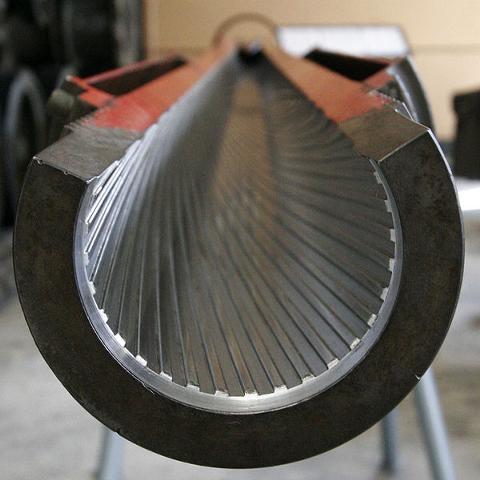
So caliber guns ... But what can be the minimum size to now just say: here is a tool, but it is - a machine gun? Experts have long argued about it and decided this: everything that is less than 15 mm is a machine gun, but that's all over - the gun! Since the most common caliber aircraft guns of World War II was equal to 20 mm, then, consequently, most small-caliber gun just will have a bore diameter of 20 mm, although there are exceptions. The most famous - the Japanese anti-tank gun, created in the early 30s of the twentieth century. namely that caliber. It was the heaviest anti-tank gun in the world, but as it was still "gun" that it could carry two people. Large caliber - it's a great armor, but in general it has not justified, because the speed of his armor piercing bullet was not very large, but it is a very important indicator for this type of weapon!
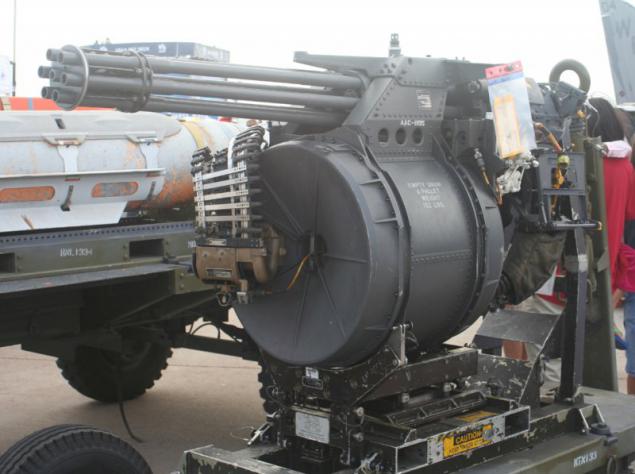
But the automatic aircraft cannons caliber 20mm know very much, but the most famous of them is the automatic gun "Volcano", developed in the US for arming aircraft and helicopters, as well as anti-aircraft artillery systems in armored personnel carriers and ships. In the second film, the Terminator can see how such a system functions, although the real person withstand the impact of such weapons, and can not.
And not only guns, but even a machine gun! "You have 20 - decided our military, having become acquainted with German aircraft gun during World War II - and here we have a 23-mm!" And this gun is heavier, and thus more damaging projectile brand load cell was created and stood on many of our aircraft, including the Il-2. And in other countries have been developed for aviation and anti-aircraft gun, 25 and 27 mm, until finally, caliber 30 mm not superseded all others. However, it is known that the aircraft staged large-caliber guns and more: 35, 37, 40, 45, 50, 55 and even 75 mm, which turns them into a real "flying artillery." However, for aircraft, they were all too heavy, which is why the military today and stopped at the 30-mm caliber ...
But on land and at sea 23, 25, 35 and 37 mm anti-aircraft machine guns, as well, however, as the 40-mm, were very popular and remain so now, that's only 25mm today is found mainly on the US BMP " Bradley ". Anti-aircraft machine guns to 35mm we meet in the German "Cheetah" and Japanese ZSU "Type 87" .Kalibr 45 mm was very popular in the Red Army, where anti-tank guns - "sorokopyatki" were her principal means of struggle against the German tanks almost All the Great Patriotic War. But in other armies of the world did not know of this caliber, except in Italy was such a mortar. But there from Sweden to Japan were distributed anti-tank guns 37, 40 and 47 mm, and more and 57 mm - caliber, we have already occurred during the war. Known gauges 50, 51 and 55 mm, but they are not large spread received. Gages 50 and 51 mm are modern light mortars in foreign armies. 60 mm - also "mortar" caliber, but already 64 mm - it is quite serious artillery system - the first in Russia caliber rapid-fire guns design Baranovsky had Recoil buffer and recuperator! 65 mm - this is the caliber of the Spanish Lung howitzers and 68 mm - Austrian mountain guns H1H end - the beginning of the twentieth century. 73-millimeter cannon "Thunder" stood on the first Soviet BMP and BMD, but this caliber as something not very we caught. But about Russian "trehdyuymovku" Putilov know very many.
Rapid-firing gun Baranowski
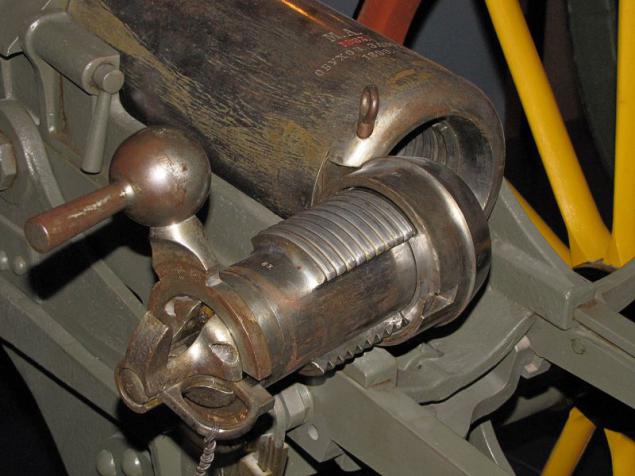
However, more well-known around the world is not much different from her caliber of 75 mm. Such was among the first French high-velocity guns Puteaux and Duport sample in 1897, and already our 76 2-mm gun of his direct heir. And that is why the "three inches" is understandable. In Russia, as in many other countries in the 1 in. caliber weapons then measured in inches rather than millimeters. One inch - 25 is 4 mm, then three inches are precisely equal to 76 mm 2!
German guns - our opponent trehdyuymovki on the battlefields of the First World War - had a caliber of 77 mm, and in general gauges 75 and 76, 2 - is the most common calibers in the world. Such guns were made and as a mountain, trench, tank, field and anti-aircraft guns, although there are exceptions. For example, the caliber of 70 mm was British mountain gun, and the same caliber was a Japanese infantry gun "type 92", is actively used during the Second World War. Interestingly, it is still in service in China and Vietnam, primarily because it is ideal for undersized soldiers! By the way, all for the same reason the weight of projectiles that gun was the Japanese 3, 8 kg, but the English - 4, 5! Interestingly, the same British and had another dimension to their guns, but not in inches, and the tradition in pounds by weight of the projectile. However, it turned out that it is not very convenient, and sometimes leads to confusion. Thus, the English three-inch gun BL Mk2 applied in the British Army during the Boer War, called the 15-pound, but the gun exactly the same caliber of the First World War - 13-pounder, and just because she was lighter projectile! Incidentally, Germany gauges implements traditionally not measured in millimeters and in inches and in centimeters and, accordingly, they were designated as, and.
81 and 82 mm - is traditionally mortar calibers. And 81 mm was adopted abroad, but the 82 mm - with us. It is believed that this was done to their mines could shoot from our mortars, but our of their mortars can not be! Of course, in combat conditions it is profitable, although the accuracy when using the "no friends" and a few minutes decreased.
Then there are very widespread and the troops in the field, and in the tank, such average caliber as 85, 87, 6, 88, 90 and 94 mm. 85 mm - a Soviet anti-aircraft gun and the gun of the T-34/85, 87, 6 mm - a British 25-pound howitzer-gun Mk2, shoot with the base plate, allowing it to rotate 360 degrees, and 88 mm caliber was a famous German anti-aircraft gun "eight-eight." It was also the caliber of the guns tanks "Tiger" and SAU "Ferdinand". 3, 7-inch or 94-mm gun - a defense of the British anti-aircraft gun in the 1937-1950 years., With a reach of 10 kilometers. But the 90-mm cannon stood on American tanks "Pershing," appears at the very end of the war WWII.
Calibers 100, 102, 105, 107 mm - were very popular in the army and in the navy. Known and 106-mm recoilless rifles, but also recoilless cannons were 105 and 107 mm. As for rifled guns, they were put on ships (as the main fire on light cruisers and destroyers and support to large) and in tanks. Moreover, the 105-mm tank guns were a response to the received foreign tank builders in our country caliber tank guns of 100 mm. When there is "gone" caliber 105 mm, then we put on the tanks guns caliber 115, and then 125 mm! But the caliber 114-mm guns were British field howitzers, and they were placed on the same so-called "gun boats"! Interestingly, this howitzer was somehow in the vaults of the Historical museum in Kazan. Or no longer worth?
120 mm - this is a typical mortar caliber, but the same gun and stood on ships (in particular in the USSR, they were used on monitors and gunboats), and heavy foreign tanks. But the 122-mm howitzer only existed in Russia. Caliber 127 mm - Universal had guns on warships US and British heavy guns that were used by the British army as well as in the artillery of the Red Army. 130 mm - caliber Soviet marine, coastal, and tank guns. 135, 140, 150, 152 mm - this caliber guns cruisers. And 152mm - "six-inch" - has long been considered the most massive and sets more and armadillos, while the 140-mm caliber is a promising tank shells, currently being developed to replace the aging 120-millimeter guns.
MT-13 mortar
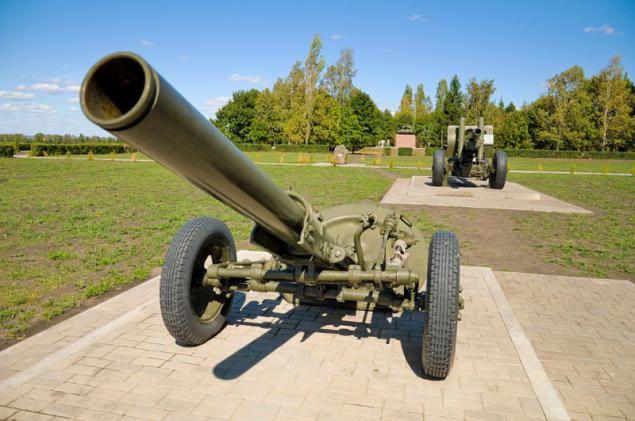
At the same time, 152 and 155 mm - is heavy caliber guns and howitzers in the Army, including self-propelled. 160 mm - caliber of our Soviet (and Israeli and Chinese) mortar MT-13, as well as some sea shells on cruisers and battleships. But our ships are not guns stoyali.175 mm - on the contrary, was never applied to the sea, but the Americans used it in their self-propelled artillery system M107 heavy. 180, 190 and 195- mm - again caliber naval guns, standing on cruisers, but the 203 mm - the famous "Washington caliber" heavy cruisers. However, it had (and have in the present time), some heavy guns land ground troops, designed to suppress and destroy the enemy at long range, or the destruction of a particularly strong fortifications. For example, it is our "Peony". 210-mm caliber is also a land of high power guns that were in service of the Red Army and the Wehrmacht at the beginning of the Great Patriotic War.
"Peony". 210 mm
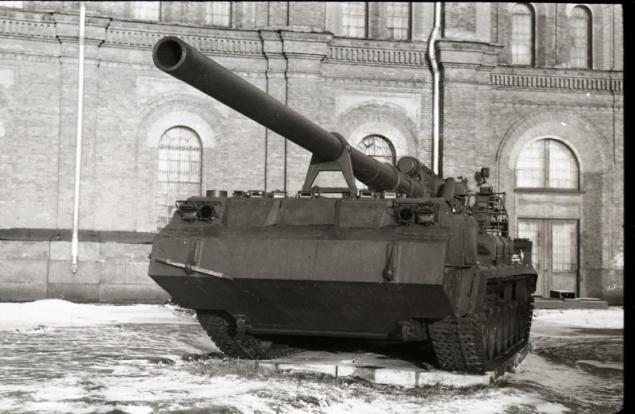
The diameter of the bore is equal to 229, 234, 240, 254 mm were marine and coastal guns. In particular, our mortar "Tulip" is just a caliber of 240 mm. But gauges 270 and 280-mm mortars land also belonged to long-range guns and ironclads and battleships. "Twelve inches" - 305 mm - the most common main battery on the battleship and battleships, but also in the coastal and the train of artillery, and, besides, it was still and heavy caliber howitzers reserve of the High Command and the individual artdiviziona special power.
However, shortly after his appearance on the ships twelve-caliber naval artillery ceased to satisfy those since 1875 started to install on ships more and more powerful weapons. First, 320, 330, 340, 343, 356, 381 mm - like so they gradually became more and more, while the shells to them heavier and deadly. At the same time, the 330-mm caliber was American ground siege mortar was first installed on the train platform in 1865, but the caliber of 356 mm was many rail guns. The projectile is a cannon could weigh 747 kg, and fly out of the barrel at a speed of 731 m / sec!
The lifting mechanism captured by the Germans the French heavy 240-mm cannon concern "Saint-Chamond" sample 84/17 year
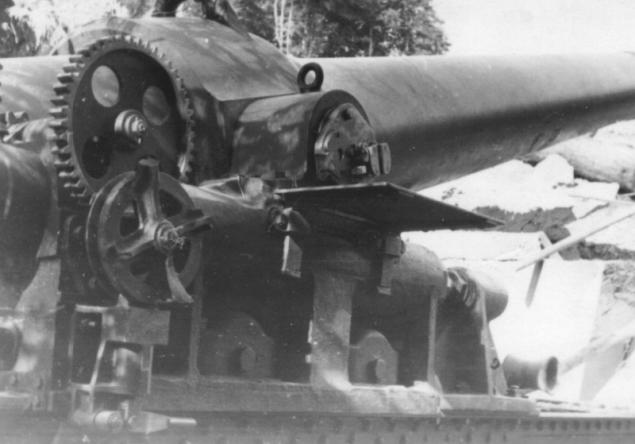
Caliber 400 mm was also near the railway guns - French heavy guns of the company "Saint-Chamond" sample 1916 Range her shot was 16 km. Shell weight was 900 kg. 406, 412 and 420 mm - this caliber naval guns, monsters with trunks weighing over 100 tons! Experienced gun 406-mm and still stands on the ground near St. Petersburg and had the same caliber of our postwar ACS 'Condenser ". 412-mm guns were in the English battleship "Benbow." 420 mm - gun French battleship "Cayman" (1875), and the German heavy field mortars "Big Bertha", which fired shells weighing 810 kg. Also this caliber postwar Soviet self-propelled mortar "Oka". Cannon 450mm caliber is the main Italian battleships "Duilio" and "Dandolo". Finally the biggest weight were 457-mm guns of the Japanese battleship "Yamato" (and a sister to him, "Musashi") that it was nine pieces: original record and the now beaten by any other country in the world. But this is not the biggest guns. More larger caliber is 508 mm cannons were American monitors of the Civil War in the United States. And they sent a target core weight of 500 kg. Raised their special crane mounted inside the tower, for cast on their body lugs and special trays are inserted into the barrel, rolled inside. Impact force of such nuclei was truly monstrous, that only makes them iron, so hit the armor is strong enough, they often simply split, because what they were and was abandoned in favor of shells with pointed head portion.
ACS 'Condenser »
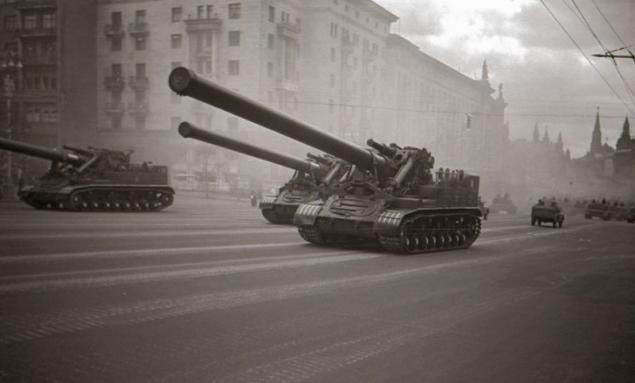
On land larger caliber guns, too, there was plenty. For example, back in 1489 in Flanders was made 495-mm cannon "Mons Meg," a screw bolt, but the mortar Rhodes knights, well preserved to this day, was even more - 584 mm! No less powerful cannon had in XY. and opponents of the then Christian - Turks who fought with Constantinople, as well as with the Knights. Thus, during its siege in 1453 the Hungarian Urban caster cast them bombard copper caliber 610 mm, shoot stone balls weighing 328 kg. In 1480, during the siege of Rhodes Turks bombard caliber already used 890-mm. In response, the Rhodian knights were able to cast exactly the same caliber mortar "Pumhard" throw their stone core steeply that it was easier for Europeans, while the Turks had to shoot upwards. This may also include and our legendary "Tsar Cannon", which had an initial trunk diameter of 900 mm, and the final, already quite narrow near the bolt - 825 mm!
"Mons Meg»
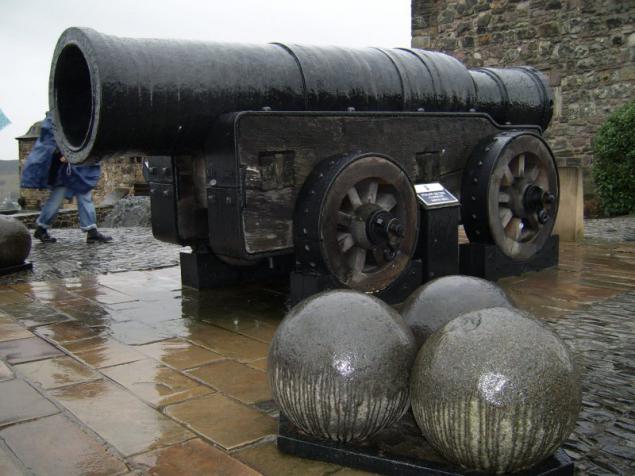
"Tsar Cannon»
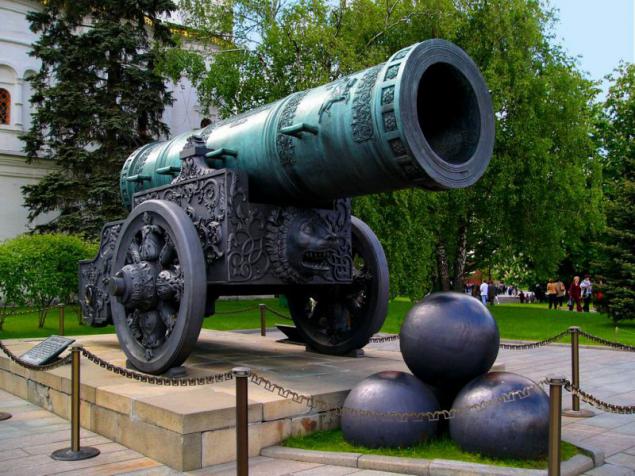
But here's the biggest gun (and not bombard!) Was cast by order of an Indian rajah Gopoly in 1670 caliber, it's true, "Tsar Cannon" inferior, but superior to its weight and length of the barrel! SAU German "Karl" originally had a 600-mm caliber, but after the first trunks had deteriorated, they were replaced by the new 540-mm. The famous "supergun" "Dora" was a caliber of 800 mm and a giant rail transporter with its own bakery and a bath, not to mention the air defenses. But the biggest ground weapon was still not it, and the American setting "Little David" caliber 914 mm. Originally it was used for the experienced throwing bombs during their tests it replaced the bomber. At the end of the war tried to use it to destroy the land of the Japanese fortifications, but could finish the war before this idea really worked.
"Little David" caliber 914 mm

However, this tool diameter of the bore is not the greatest! The most large-caliber mortar rightly considered Englishman Robert Mallet-caliber 920 mm, established back in 1857. And, too, is not! Indeed, in the novel by Jules Verne "The Begum's Fortune" is described where a monstrous gun with one shot which malevolent Professor Schulze intended to destroy the entire city of Franceville. And although it is not the best of Jules Verne novels, is in the "Tower of the Ox" Cannon described it in detail and with skill. And, nevertheless, it's still fiction, but the "Little David," You can see firsthand the open area in the United States Aberdeen Proving Ground.
Interestingly, during the Second World War, there were so-called bikalibernye guns, ie guns with a tapered bore. At the entrance of his caliber was alone, but on the other output - less! They used the "principle Gerlich": when the conical barrel squeezes the bullet to a slightly smaller diameter. In this case the gas pressure on its bottom is growing, and the initial velocity and energy increase. A typical representative of such weapons systems became German 28/20 mm (28 mm at the entrance of the cone, and 20mm at the muzzle) antitank gun. With a weight of 229 kg of the gun, its armor-piercing shell had a speed of 1400 m / sec, which was much higher than it is time to give others the same gun. But this achievement went to the Germans dearly. Conical barrels were difficult to produce, and they wear out much faster. Shells to them too much harder, but the explosives they contain less ordinary - caliber. That's why in the end of them, they had to give up, even though some of their number even participated in the battles.
P.S. Most likely, this is not an exhaustive list, but to output sufficient. And what conclusion? Only the one that almost any "hole in the pipe" can do shoot, it would be only a wish! After all, the same Japanese, for example, and started doing all the guns from tree trunks, even in 1905, and of them was shot, though, of course, and not nuclei, and incendiary shells of the segments of bamboo trunks.
I have everything!
2, 8 cm schwere Panzerbüchse 41
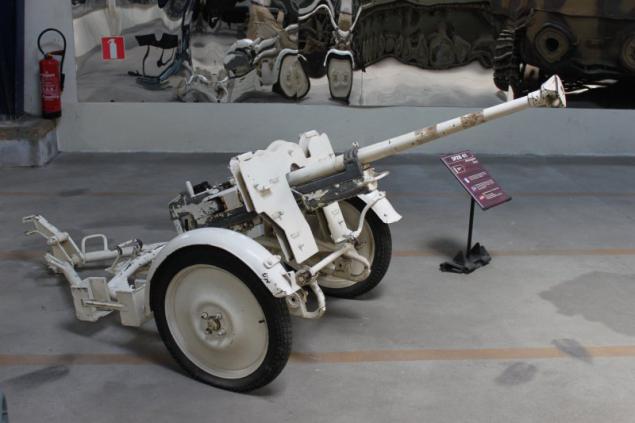
Will 11 photos and text via

So caliber guns ... But what can be the minimum size to now just say: here is a tool, but it is - a machine gun? Experts have long argued about it and decided this: everything that is less than 15 mm is a machine gun, but that's all over - the gun! Since the most common caliber aircraft guns of World War II was equal to 20 mm, then, consequently, most small-caliber gun just will have a bore diameter of 20 mm, although there are exceptions. The most famous - the Japanese anti-tank gun, created in the early 30s of the twentieth century. namely that caliber. It was the heaviest anti-tank gun in the world, but as it was still "gun" that it could carry two people. Large caliber - it's a great armor, but in general it has not justified, because the speed of his armor piercing bullet was not very large, but it is a very important indicator for this type of weapon!

But the automatic aircraft cannons caliber 20mm know very much, but the most famous of them is the automatic gun "Volcano", developed in the US for arming aircraft and helicopters, as well as anti-aircraft artillery systems in armored personnel carriers and ships. In the second film, the Terminator can see how such a system functions, although the real person withstand the impact of such weapons, and can not.
And not only guns, but even a machine gun! "You have 20 - decided our military, having become acquainted with German aircraft gun during World War II - and here we have a 23-mm!" And this gun is heavier, and thus more damaging projectile brand load cell was created and stood on many of our aircraft, including the Il-2. And in other countries have been developed for aviation and anti-aircraft gun, 25 and 27 mm, until finally, caliber 30 mm not superseded all others. However, it is known that the aircraft staged large-caliber guns and more: 35, 37, 40, 45, 50, 55 and even 75 mm, which turns them into a real "flying artillery." However, for aircraft, they were all too heavy, which is why the military today and stopped at the 30-mm caliber ...
But on land and at sea 23, 25, 35 and 37 mm anti-aircraft machine guns, as well, however, as the 40-mm, were very popular and remain so now, that's only 25mm today is found mainly on the US BMP " Bradley ". Anti-aircraft machine guns to 35mm we meet in the German "Cheetah" and Japanese ZSU "Type 87" .Kalibr 45 mm was very popular in the Red Army, where anti-tank guns - "sorokopyatki" were her principal means of struggle against the German tanks almost All the Great Patriotic War. But in other armies of the world did not know of this caliber, except in Italy was such a mortar. But there from Sweden to Japan were distributed anti-tank guns 37, 40 and 47 mm, and more and 57 mm - caliber, we have already occurred during the war. Known gauges 50, 51 and 55 mm, but they are not large spread received. Gages 50 and 51 mm are modern light mortars in foreign armies. 60 mm - also "mortar" caliber, but already 64 mm - it is quite serious artillery system - the first in Russia caliber rapid-fire guns design Baranovsky had Recoil buffer and recuperator! 65 mm - this is the caliber of the Spanish Lung howitzers and 68 mm - Austrian mountain guns H1H end - the beginning of the twentieth century. 73-millimeter cannon "Thunder" stood on the first Soviet BMP and BMD, but this caliber as something not very we caught. But about Russian "trehdyuymovku" Putilov know very many.
Rapid-firing gun Baranowski

However, more well-known around the world is not much different from her caliber of 75 mm. Such was among the first French high-velocity guns Puteaux and Duport sample in 1897, and already our 76 2-mm gun of his direct heir. And that is why the "three inches" is understandable. In Russia, as in many other countries in the 1 in. caliber weapons then measured in inches rather than millimeters. One inch - 25 is 4 mm, then three inches are precisely equal to 76 mm 2!
German guns - our opponent trehdyuymovki on the battlefields of the First World War - had a caliber of 77 mm, and in general gauges 75 and 76, 2 - is the most common calibers in the world. Such guns were made and as a mountain, trench, tank, field and anti-aircraft guns, although there are exceptions. For example, the caliber of 70 mm was British mountain gun, and the same caliber was a Japanese infantry gun "type 92", is actively used during the Second World War. Interestingly, it is still in service in China and Vietnam, primarily because it is ideal for undersized soldiers! By the way, all for the same reason the weight of projectiles that gun was the Japanese 3, 8 kg, but the English - 4, 5! Interestingly, the same British and had another dimension to their guns, but not in inches, and the tradition in pounds by weight of the projectile. However, it turned out that it is not very convenient, and sometimes leads to confusion. Thus, the English three-inch gun BL Mk2 applied in the British Army during the Boer War, called the 15-pound, but the gun exactly the same caliber of the First World War - 13-pounder, and just because she was lighter projectile! Incidentally, Germany gauges implements traditionally not measured in millimeters and in inches and in centimeters and, accordingly, they were designated as, and.
81 and 82 mm - is traditionally mortar calibers. And 81 mm was adopted abroad, but the 82 mm - with us. It is believed that this was done to their mines could shoot from our mortars, but our of their mortars can not be! Of course, in combat conditions it is profitable, although the accuracy when using the "no friends" and a few minutes decreased.
Then there are very widespread and the troops in the field, and in the tank, such average caliber as 85, 87, 6, 88, 90 and 94 mm. 85 mm - a Soviet anti-aircraft gun and the gun of the T-34/85, 87, 6 mm - a British 25-pound howitzer-gun Mk2, shoot with the base plate, allowing it to rotate 360 degrees, and 88 mm caliber was a famous German anti-aircraft gun "eight-eight." It was also the caliber of the guns tanks "Tiger" and SAU "Ferdinand". 3, 7-inch or 94-mm gun - a defense of the British anti-aircraft gun in the 1937-1950 years., With a reach of 10 kilometers. But the 90-mm cannon stood on American tanks "Pershing," appears at the very end of the war WWII.
Calibers 100, 102, 105, 107 mm - were very popular in the army and in the navy. Known and 106-mm recoilless rifles, but also recoilless cannons were 105 and 107 mm. As for rifled guns, they were put on ships (as the main fire on light cruisers and destroyers and support to large) and in tanks. Moreover, the 105-mm tank guns were a response to the received foreign tank builders in our country caliber tank guns of 100 mm. When there is "gone" caliber 105 mm, then we put on the tanks guns caliber 115, and then 125 mm! But the caliber 114-mm guns were British field howitzers, and they were placed on the same so-called "gun boats"! Interestingly, this howitzer was somehow in the vaults of the Historical museum in Kazan. Or no longer worth?
120 mm - this is a typical mortar caliber, but the same gun and stood on ships (in particular in the USSR, they were used on monitors and gunboats), and heavy foreign tanks. But the 122-mm howitzer only existed in Russia. Caliber 127 mm - Universal had guns on warships US and British heavy guns that were used by the British army as well as in the artillery of the Red Army. 130 mm - caliber Soviet marine, coastal, and tank guns. 135, 140, 150, 152 mm - this caliber guns cruisers. And 152mm - "six-inch" - has long been considered the most massive and sets more and armadillos, while the 140-mm caliber is a promising tank shells, currently being developed to replace the aging 120-millimeter guns.
MT-13 mortar

At the same time, 152 and 155 mm - is heavy caliber guns and howitzers in the Army, including self-propelled. 160 mm - caliber of our Soviet (and Israeli and Chinese) mortar MT-13, as well as some sea shells on cruisers and battleships. But our ships are not guns stoyali.175 mm - on the contrary, was never applied to the sea, but the Americans used it in their self-propelled artillery system M107 heavy. 180, 190 and 195- mm - again caliber naval guns, standing on cruisers, but the 203 mm - the famous "Washington caliber" heavy cruisers. However, it had (and have in the present time), some heavy guns land ground troops, designed to suppress and destroy the enemy at long range, or the destruction of a particularly strong fortifications. For example, it is our "Peony". 210-mm caliber is also a land of high power guns that were in service of the Red Army and the Wehrmacht at the beginning of the Great Patriotic War.
"Peony". 210 mm

The diameter of the bore is equal to 229, 234, 240, 254 mm were marine and coastal guns. In particular, our mortar "Tulip" is just a caliber of 240 mm. But gauges 270 and 280-mm mortars land also belonged to long-range guns and ironclads and battleships. "Twelve inches" - 305 mm - the most common main battery on the battleship and battleships, but also in the coastal and the train of artillery, and, besides, it was still and heavy caliber howitzers reserve of the High Command and the individual artdiviziona special power.
However, shortly after his appearance on the ships twelve-caliber naval artillery ceased to satisfy those since 1875 started to install on ships more and more powerful weapons. First, 320, 330, 340, 343, 356, 381 mm - like so they gradually became more and more, while the shells to them heavier and deadly. At the same time, the 330-mm caliber was American ground siege mortar was first installed on the train platform in 1865, but the caliber of 356 mm was many rail guns. The projectile is a cannon could weigh 747 kg, and fly out of the barrel at a speed of 731 m / sec!
The lifting mechanism captured by the Germans the French heavy 240-mm cannon concern "Saint-Chamond" sample 84/17 year

Caliber 400 mm was also near the railway guns - French heavy guns of the company "Saint-Chamond" sample 1916 Range her shot was 16 km. Shell weight was 900 kg. 406, 412 and 420 mm - this caliber naval guns, monsters with trunks weighing over 100 tons! Experienced gun 406-mm and still stands on the ground near St. Petersburg and had the same caliber of our postwar ACS 'Condenser ". 412-mm guns were in the English battleship "Benbow." 420 mm - gun French battleship "Cayman" (1875), and the German heavy field mortars "Big Bertha", which fired shells weighing 810 kg. Also this caliber postwar Soviet self-propelled mortar "Oka". Cannon 450mm caliber is the main Italian battleships "Duilio" and "Dandolo". Finally the biggest weight were 457-mm guns of the Japanese battleship "Yamato" (and a sister to him, "Musashi") that it was nine pieces: original record and the now beaten by any other country in the world. But this is not the biggest guns. More larger caliber is 508 mm cannons were American monitors of the Civil War in the United States. And they sent a target core weight of 500 kg. Raised their special crane mounted inside the tower, for cast on their body lugs and special trays are inserted into the barrel, rolled inside. Impact force of such nuclei was truly monstrous, that only makes them iron, so hit the armor is strong enough, they often simply split, because what they were and was abandoned in favor of shells with pointed head portion.
ACS 'Condenser »

On land larger caliber guns, too, there was plenty. For example, back in 1489 in Flanders was made 495-mm cannon "Mons Meg," a screw bolt, but the mortar Rhodes knights, well preserved to this day, was even more - 584 mm! No less powerful cannon had in XY. and opponents of the then Christian - Turks who fought with Constantinople, as well as with the Knights. Thus, during its siege in 1453 the Hungarian Urban caster cast them bombard copper caliber 610 mm, shoot stone balls weighing 328 kg. In 1480, during the siege of Rhodes Turks bombard caliber already used 890-mm. In response, the Rhodian knights were able to cast exactly the same caliber mortar "Pumhard" throw their stone core steeply that it was easier for Europeans, while the Turks had to shoot upwards. This may also include and our legendary "Tsar Cannon", which had an initial trunk diameter of 900 mm, and the final, already quite narrow near the bolt - 825 mm!
"Mons Meg»

"Tsar Cannon»

But here's the biggest gun (and not bombard!) Was cast by order of an Indian rajah Gopoly in 1670 caliber, it's true, "Tsar Cannon" inferior, but superior to its weight and length of the barrel! SAU German "Karl" originally had a 600-mm caliber, but after the first trunks had deteriorated, they were replaced by the new 540-mm. The famous "supergun" "Dora" was a caliber of 800 mm and a giant rail transporter with its own bakery and a bath, not to mention the air defenses. But the biggest ground weapon was still not it, and the American setting "Little David" caliber 914 mm. Originally it was used for the experienced throwing bombs during their tests it replaced the bomber. At the end of the war tried to use it to destroy the land of the Japanese fortifications, but could finish the war before this idea really worked.
"Little David" caliber 914 mm

However, this tool diameter of the bore is not the greatest! The most large-caliber mortar rightly considered Englishman Robert Mallet-caliber 920 mm, established back in 1857. And, too, is not! Indeed, in the novel by Jules Verne "The Begum's Fortune" is described where a monstrous gun with one shot which malevolent Professor Schulze intended to destroy the entire city of Franceville. And although it is not the best of Jules Verne novels, is in the "Tower of the Ox" Cannon described it in detail and with skill. And, nevertheless, it's still fiction, but the "Little David," You can see firsthand the open area in the United States Aberdeen Proving Ground.
Interestingly, during the Second World War, there were so-called bikalibernye guns, ie guns with a tapered bore. At the entrance of his caliber was alone, but on the other output - less! They used the "principle Gerlich": when the conical barrel squeezes the bullet to a slightly smaller diameter. In this case the gas pressure on its bottom is growing, and the initial velocity and energy increase. A typical representative of such weapons systems became German 28/20 mm (28 mm at the entrance of the cone, and 20mm at the muzzle) antitank gun. With a weight of 229 kg of the gun, its armor-piercing shell had a speed of 1400 m / sec, which was much higher than it is time to give others the same gun. But this achievement went to the Germans dearly. Conical barrels were difficult to produce, and they wear out much faster. Shells to them too much harder, but the explosives they contain less ordinary - caliber. That's why in the end of them, they had to give up, even though some of their number even participated in the battles.
P.S. Most likely, this is not an exhaustive list, but to output sufficient. And what conclusion? Only the one that almost any "hole in the pipe" can do shoot, it would be only a wish! After all, the same Japanese, for example, and started doing all the guns from tree trunks, even in 1905, and of them was shot, though, of course, and not nuclei, and incendiary shells of the segments of bamboo trunks.
I have everything!
2, 8 cm schwere Panzerbüchse 41



